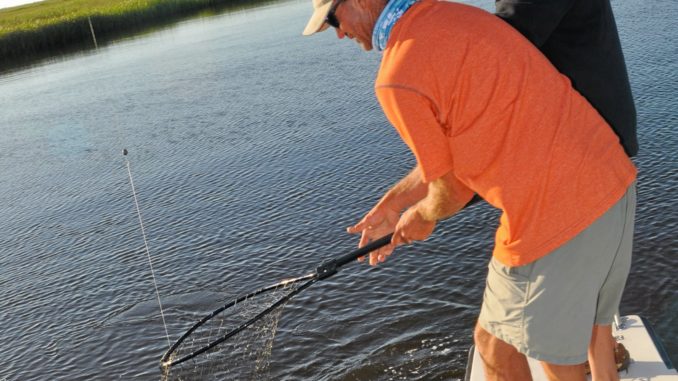
Guides Toby Fulford and Kevin Sneed of Rigged & Ready Fishing Charters use similar live-bait trolling tactics for flounder.
Their technique combines a freshwater crappie trolling set-up with a reverse-drift method used for flounder around inlets.
“It works best mid-May through July,” Sneed said. “We do it mostly at Shallotte and Lockwood Folly inlets, at Little River Inlet and Shallotte and Lockwood rivers.”
Both anglers have rod holders on their boats’ transoms that can accommodate multiple rods; Fulford uses six rods and Sneed four. Fulford also likes double-bait rigs, while Sneed prefers one baitfish, usually a small menhaden, per rod. Fulford employs 6-, 4- and 2-ounce weights, while Sneed trolls 4- and 2-ounce cigar weights.
The heaviest weights are lowered directly behind the boat, while lighter weights track farther behind, each at a speed of about .5 mph.
“We troll against the current as slow as we can so the weights and baits just bounce off the bottom,” Fulford said.
Sneed uses a trolling plate over his outboard’s propeller to slow his speed, and both troll against the tide, the opposite of drift fishing with the current for flounder.
“I fish around creek mouths and in the Shallotte River,” Fulford said.
“When the rod tips are just bouncing, you’re at the right speed,” Sneed said. “If a rod starts to load up, put it in free spool, let out a little line, and take the rod out of free spool. If the rod loads up, jerk his jaws. Nine times out of 10, it’s a flounder.”





Be the first to comment